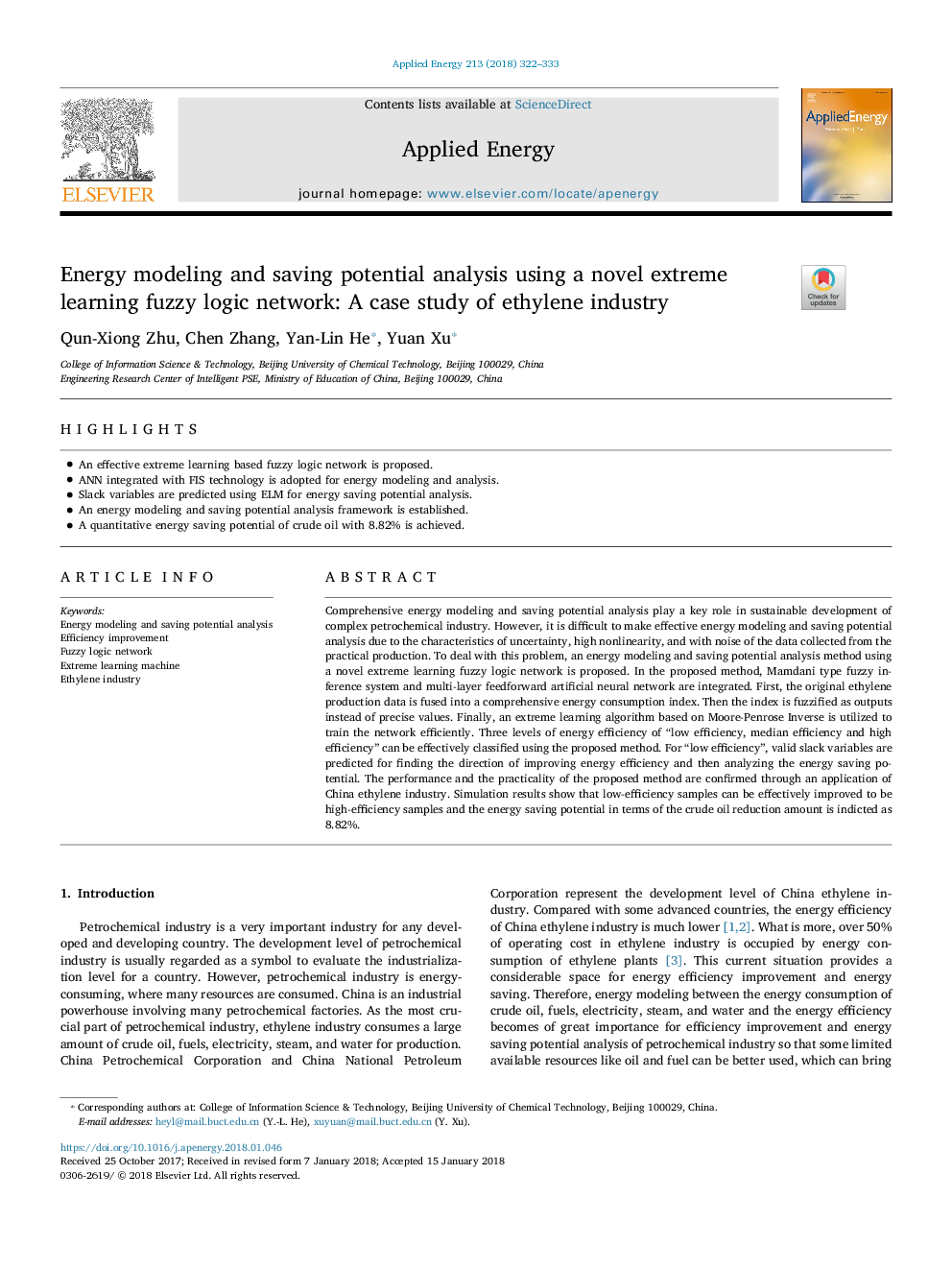ترجمه فارسی عنوان مقاله
مدل سازی انرژی و صرفه جویی در تجزیه و تحلیل بالقوه با استفاده از شبکه جدید منطق فازی فراگیر یادگیری: مطالعه موردی صنایع اتیلن
عنوان انگلیسی
Energy modeling and saving potential analysis using a novel extreme learning fuzzy logic network: A case study of ethylene industry
| کد مقاله | سال انتشار | تعداد صفحات مقاله انگلیسی |
|---|---|---|
| 82235 | 2018 | 12 صفحه PDF |
منبع

Publisher : Elsevier - Science Direct (الزویر - ساینس دایرکت)
Journal : Applied Energy, Volume 213, 1 March 2018, Pages 322-333
ترجمه کلمات کلیدی
مدل سازی انرژی و صرفه جویی در تجزیه و تحلیل بالقوه، بهبود کارایی، شبکه منطقی فازی، دستگاه یادگیری شدید صنعت اتیلن،
کلمات کلیدی انگلیسی
Energy modeling and saving potential analysis; Efficiency improvement; Fuzzy logic network; Extreme learning machine; Ethylene industry;

